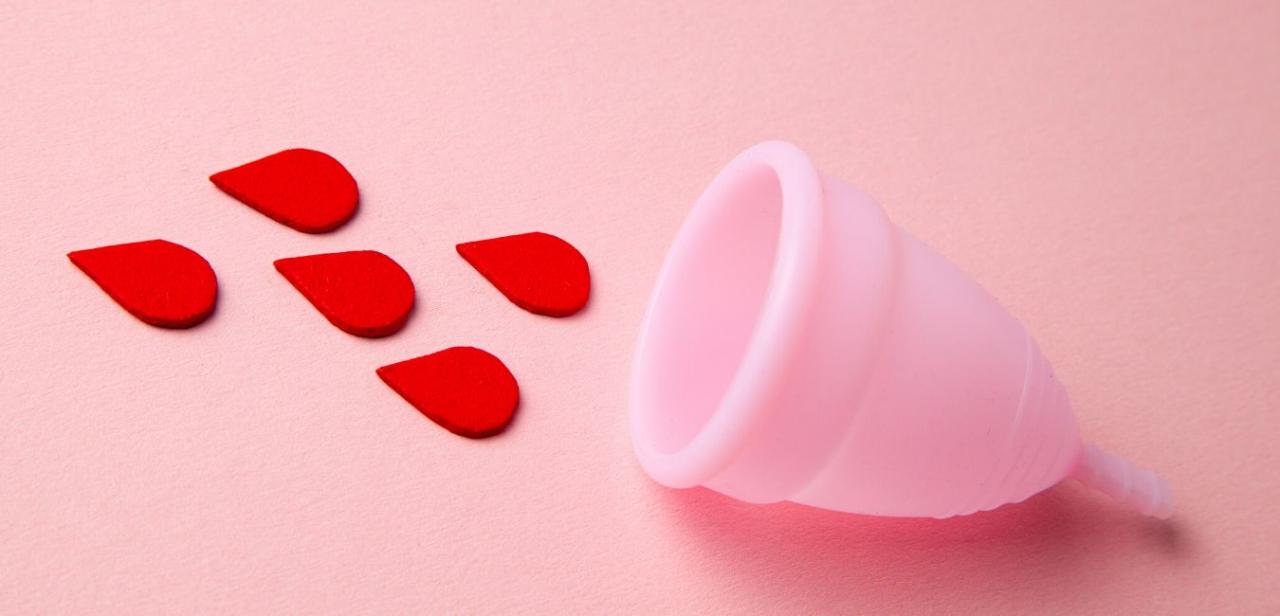It’s normal to feel anxious or nervous about using a tampon for the first time.
Tampons come in sizes slender, regular and super. They have different applicators like cardboard or plastic. Some have no applicator at all. The applicator is the two-part tube encasing the tampon.
Using the smallest size tampon with a built-in applicator is recommended when first learning how to use tampons.
The best time to practice inserting a tampon is during the heavy part of your period as this allows it to glide in more easily.
It’s important to relax. When you are nervous, your muscles tense up, which can make inserting the tampon more difficult. It's not painful to insert a tampon, but if you're tense, the process can be uncomfortable.
Find your comfortable position. It could be sitting on the toilet or standing with one foot on the bathtub.
Hold the tampon with the fingers you write with, at the spot where the smaller, inner tube inserts into the larger, outer tube. Make sure the string is visible and pointing away from your body.
With your other hand, open your vagina and place the tip of the applicator at the opening of your vagina.
Gently push the tampon into the opening, aiming for the small of your back. Stop when your fingers touch your body and the applicator’s outer tube, is completely inside the vagina. Now use your index finger to push the inner tube through the outer tube. This pushes the tampon into the vagina. You’ll know it's fully inserted when the end of the inner tube meets the end of the outer part that you were originally holding.
Gently pull out the two tubes together. Make sure the string is hanging outside of your vaginal opening.
To remove the tampon, hold the string and gently pull it downward until the entire tampon comes out. Flush the used tampon down the toilet.
If the tampon is inserted correctly, you shouldn’t feel it. If you feel uncomfortable in any way, you may have not put it in the right way. If this happens, just remove the tampon and start over with a new one.
Lubricating the end of the tampon with a water-based lubricant – not petroleum jelly – can make insertion easier in the beginning. A mirror can help locate your vaginal opening.
Practice makes perfect. If you don't get it the first time, the second try will most likely be successful. If you’re unable to insert a tampon after several attempts, see your health care provider.
Sources:
About.com Women’s Health
YoungWomensHealth.org
Kidsgrowth.com





Add a Comment4 Comments
Not all girls like wearing sanitary pads on their panties. A few prefer tampons because of the comfort it provides. Here is how to use tampons.
July 4, 2012 - 10:12pmhttp://www.buddiesunderwear.com.au/blog/3/5-period-myths-buddies-underwear/
This Comment
Hello: I am the Tampax and Always Community Manager and a registered nurse, saw your posting and thought I would respond. No doubt that the information that you provide will be helpful to girls (or women) just beginning to use tampons. On the beinggirl.com website there is content about tampon insertion also that includes a helpful video. Below is the link. We have found that explaining how to insert along with a visual is a great way of demonstrating how to do this. Please feel free to link to that when you offer information about tampon insertion.
March 23, 2011 - 8:25amhttp://www.beinggirl.com/en_US/yourperiod_inserttampon.jsp?utm_source=EmpowHer&utm_medium=NurseElaine&utm_content=link20110323&utm_campaign=comm_mgr
This Comment
Tampons are NOT flushable.
Some manufacturers claim otherwise to make their products seem more convenient, they can make this claim based on industry standards that dictate it can be classed as 'flushable' if the tampon can pass the Brunnel Flushability test; tampon clears the U-bend in a toilet set-up in a lab. There is no consideration for low-flow, septic tanks, old systems, or what happens further up the system.
Think about it - tampons do not break-down in water and they expand when saturated. As such they can block your toilet and house plumbing, as well as blocking pipes further up the system - people have to go in to manually clear such blockages and damage from blockages cost BILLIONS per year to fix, money that could be far better spent. Furthermore tampons can make it though sewage systems and into the water ways and onto beaches.
Tampons are a big enough environmental risk as it is due to manufacturing (particularly with rayon chemically treated/bleached brands) and waste (12,000+ over a lifetime) - more so if you're encouraging women to use applicators. Applicators are there purely for women who don't like to touch their genitals or flow, it's total myth that these make insertion easier, it's very common for girls to insert the tampon too low down when using applicators - non-applicator are easier as they are less complicated, give more control over depth/direction, and have rounder tips.
Please dispose of used tampons responsibly - wrap-up and bin, that's why they have sanitary bins in bathroom stalls!
March 16, 2011 - 3:57pmThis Comment
This comment is addressing the posting from 'anonymous'. While the Internet and health-related blogs are an excellent resource for health and medical information, users must be aware that some of what they read may not be factual or based on sound scientific research. Many sites have investigated tampon health scares related to ingredients and manufacturing and are sharing the truth. To learn more, visit the websites below:
http://www.fda.gov
March 23, 2011 - 9:44amhttp://womens-health.org
http://www.snopes.com
http://www.cnn.com
http://www.boston.com
This Comment